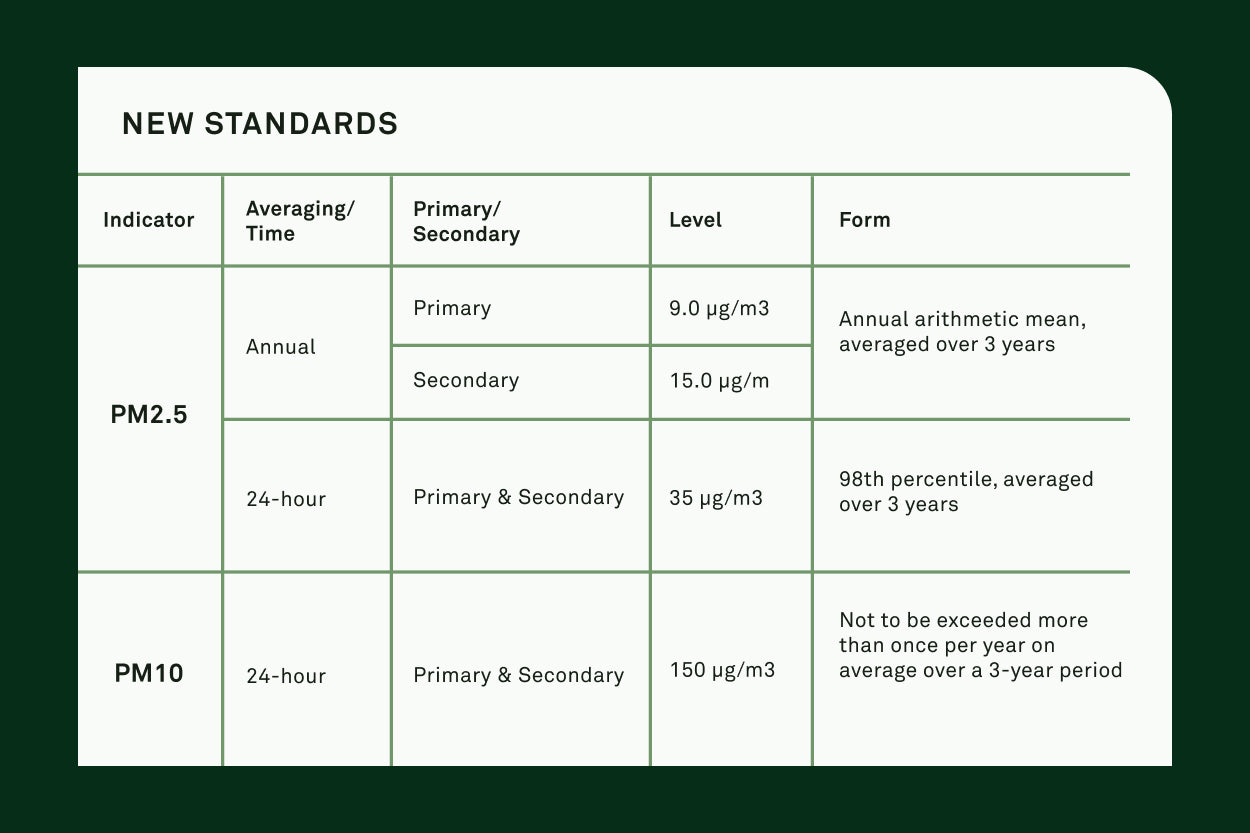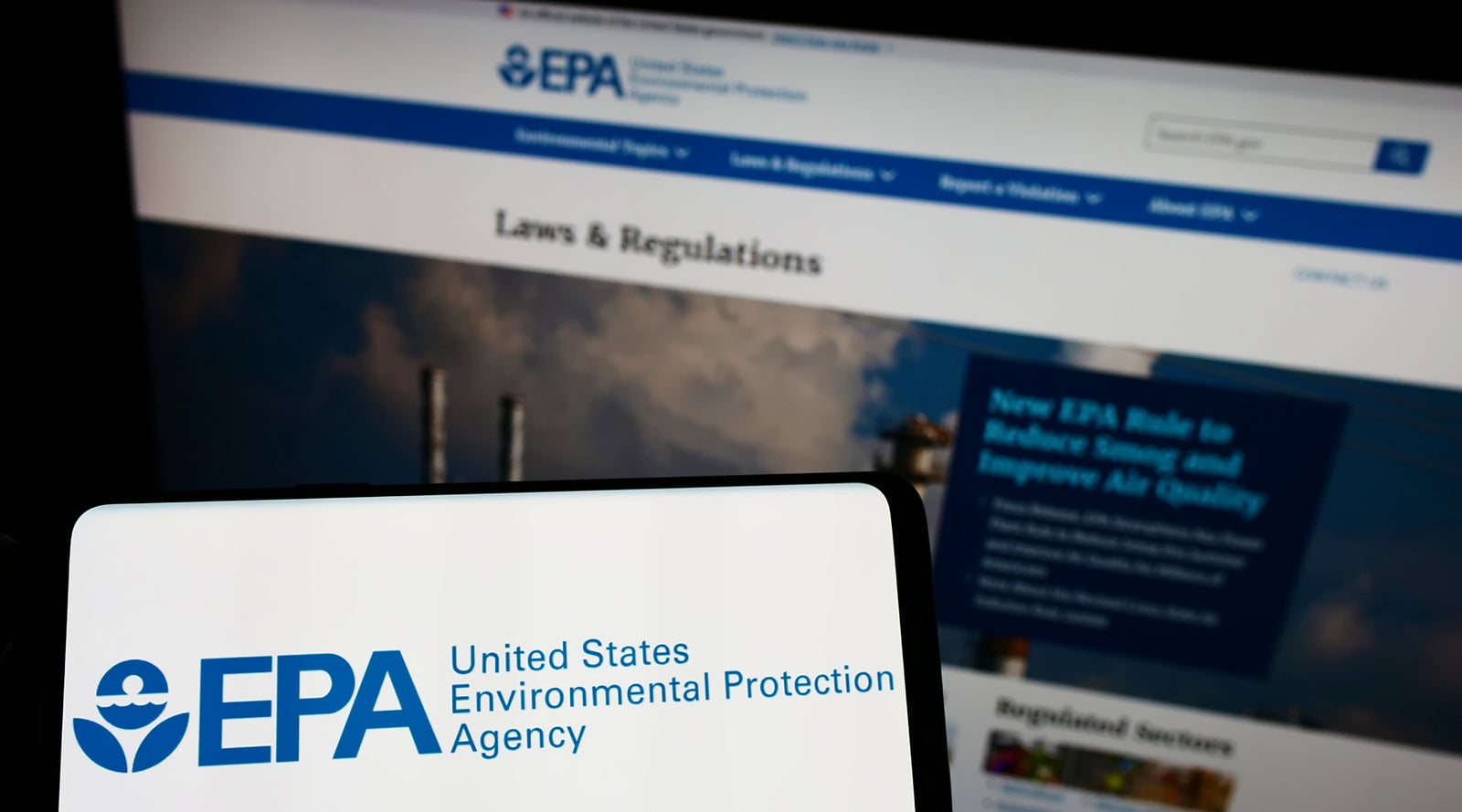On February 7, 2024, the U.S. Environmental Protection Agency (EPA) announced a landmark decision to strengthen air quality standards for fine particulate matter, one of the most dangerous types of air pollution. It’s the first time the EPA has updated their air quality standards in over a decade.

Fine particles, also known as PM2.5, pose a major health risk because they’re small enough to sneak through most of the body’s defenses. When inhaled, these microscopic particles can travel deep into the lungs and beyond, entering the bloodstream and spreading to other organs. Exposure to PM2.5 has been linked to asthma attacks, heart and lung disease, cancer, and other health problems.
Over one-third of Americans live in counties with unhealthy levels of air pollution like PM2.5. The Biden-Harris Administration’s air quality standards update aims to bring this number down — saving up to 4,500 lives, preventing 290,000 lost workdays, and creating $46 billion in net health benefits annually by 2032.

Why update the air quality standards now?
When the EPA created the old air quality standards in 2012, 12 μg/m3 was seen as a “healthy” level of PM2.5. Since then, new research suggests that fine particle exposure at that level can still lead to health problems, including premature death. The new, stricter standard of 9 μg/m3 should do a better job of protecting Americans from harmful and expensive health problems caused by air pollution.
Improving indoor air quality at home
The EPA doesn’t set standards for indoor air quality, but we know that indoor air pollution can reach levels 2 to 5 (or more!) times higher than outdoor levels. Here are some ways you can protect yourself from air pollution and improve your indoor air quality at home:
Increase ventilation: Open windows and doors to let in fresh outdoor air, and use exhaust fans in your bathrooms and kitchen to vent pollutants outside. If you have a gas stove or fireplace, make sure they’re properly vented to the outdoors.
Control humidity: Try to keep relative humidity levels in your home between 30 and 50% to prevent dry air and mold growth. If needed, use a dehumidifier or humidifier to lower or raise your home’s humidity level.
Use air purifiers: Invest in one or more high-quality air purifiers like Molekule Air Pro, which are equipped with advanced filtration technology to remove fine particles and other pollutants from the air.
Clean up: Regular cleaning can help keep dust, allergens, and other household pollutants from building up on floors, upholstery, and bedding.
Choose “green” products: Avoid bringing harsh chemicals into your home. Instead, choose eco-friendly (and air-quality-friendly) options when shopping for things like cleaning products, paint, and pesticides.
Test for radon: Radon is the second leading cause of lung cancer in the U.S. It’s a colorless, odorless radioactive gas that can seep into homes through cracks in the foundation. You can test your home’s air with easy-to-use, inexpensive radon testing kits.
Maintain your HVAC system: Regular maintenance and filter replacements can help keep your HVAC system clean and working properly, so it can increase airflow and filter out larger pollutants.
Adopt some houseplants: Plants aren’t a substitute for air purifiers, but some species—like ficus, ferns, and spider plants — may help slightly improve indoor air quality. Just avoid overwatering, which can increase indoor humidity and lead to mold growth.
Minimize indoor smoke: Smoke is a complex mixture of particles and gases, many of which are harmful to your health. Keep smoke outside whenever possible, and limit indoor activities that cause smoke, such as burning incense or lighting a fire in the fireplace.
To learn more about the EPA’s air quality standards, read How to Understand AQI Colors on Air Quality Maps.







